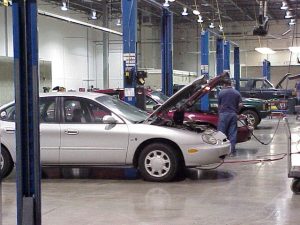3 Ways To Re-Think Reconditioning And Improve Profitability
I was always taught that a dealer should never apologize for anything when it came to used vehicles. This meant that we would always spend the time and money to “go the extra mile” with the reconditioning of every used car at my family’s dealership.
The problem for today’s dealers is this: In an age where the margin between the cost to acquire and retail a used vehicle is shrinking, there’s pressure to re-visit the reconditioning costs dealers have traditionally passed along to customers. They can no longer count on the age-old axiom that $1 spent for reconditioning will translate to a $1.25 return.
and retail a used vehicle is shrinking, there’s pressure to re-visit the reconditioning costs dealers have traditionally passed along to customers. They can no longer count on the age-old axiom that $1 spent for reconditioning will translate to a $1.25 return.
This reality, I believe, is driven by two factors.
First, today’s shoppers, whose initial review of used vehicles occurs via online vehicle listings, cannot fully appreciate a dealer’s “extra mile” of reconditioning when they examine photos of a car. In my day, this wasn’t the case as a vehicle shopper’s first review of a vehicle occurred on our lot.
Second, the margin compression for used vehicles makes it more difficult for dealers who “go the extra mile” to account for reconditioning costs and competitively price their used vehicles. This often translates to slower-moving inventory and age-driven price reductions, which combine to erode front-end gross profits.
For these reasons, many dealers are looking for ways to trim reconditioning expenses and ease the downward pressures on their front-end gross profit margins. The following best practices have helped dealers reduce up to $400 from their average reconditioning costs per vehicle—and increase their front-end gross profit margins:
1. Charge less than retail rates for reconditioning labor and parts. A growing number of velocity dealers are abandoning the practice of charging full retail rates (or more) for the parts and labor required for reconditioning. The dealers are reducing their rates by up to 20 percent to minimize the costs they must recoup in their retail pricing. These dealers report that this operational adjustment helps them set more competitive retail asking prices and increase their used vehicle sales rates. In turn, the parts and service departments benefit because they’re seeing a greater number of internal repair orders (ROs), albeit at a lower rate per ticket. In essence, these dealers have extended the velocity principles they’ve adopted for inventory management to their reconditioning processes.
2. Scale back the scope of reconditioning when appropriate. At some dealerships, the “go the extra mile”  philosophy has shifted to “do what’s required to make a car safe and look nice.” This translates to fewer reflexive decisions to replace brakes and tires, or fix small dings in upholstery and windshields. Dealers note that a decision to scale back reconditioning is subjective—it depends on the car and the target customer. However, these dealers say their effort to narrow the scope of reconditioning has had little discernible impact with customers. If it does, dealers say customers appreciate their efforts to make a car “right” and close a deal.
philosophy has shifted to “do what’s required to make a car safe and look nice.” This translates to fewer reflexive decisions to replace brakes and tires, or fix small dings in upholstery and windshields. Dealers note that a decision to scale back reconditioning is subjective—it depends on the car and the target customer. However, these dealers say their effort to narrow the scope of reconditioning has had little discernible impact with customers. If it does, dealers say customers appreciate their efforts to make a car “right” and close a deal.
Note: It can be more challenging and time-consuming to reduce the scope of reconditioning for dealers who use third-party vendors to fix upholstery, dents, windshields and other imperfections. For these stores, it’s a must to oversee the third-party vendors and their work to ensure it meshes with new mantra to “do what’s required to make a car safe and look nice.”
3. Use lower-cost replacement parts when appropriate. This would not apply to used vehicles that require OEM parts for certification programs. For other vehicles, however, dealers say they can reduce reconditioning costs by using quality, non-OEM parts when appropriate. In particular, dealers say they can save as much as 50 percent on the costs of high-volume replacement parts such as brakes, rotors and tires when they look for non-OEM alternatives.
I should note that such efforts to reduce reconditioning costs should be taken in conjunction with a commitment to minimize the time required to make used vehicles front-line ready. In today’s used vehicle business, time is money—and unnecessary delays for reconditioning also contribute to reduced profitability potential in used vehicles.
In an upcoming column, I’ll share other emerging best practices that help dealers preserve and protect their ability to maximize the profitability of their investments in used vehicles.
